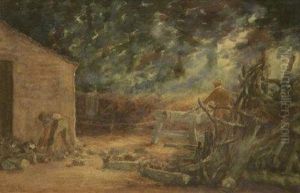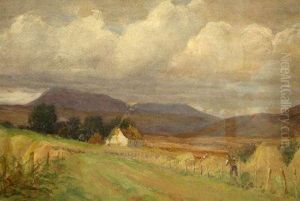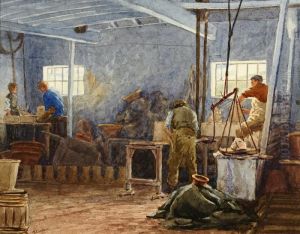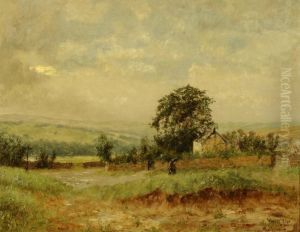Arthur Comfort Paintings
Arthur Comfort is a somewhat elusive figure in the annals of art history, primarily because details about his life and death are not as well-documented as those of his contemporaries. Born in 1876, Comfort was an English artist whose work spanned various mediums, including illustration, painting, and possibly architectural drawing. Despite the scarcity of detailed records, his contributions to the art world during his active years are noteworthy, particularly in the realm of illustration.
Comfort's style and subject matter were reflective of the late 19th and early 20th centuries, a period marked by significant changes in the art world. This era saw the transition from traditional academic art to more modern and abstract forms. However, Comfort's work largely remained rooted in the representational, focusing on landscapes, urban scenes, and possibly historical and genre subjects. His illustrations may have graced the pages of books, magazines, and newspapers, offering a glimpse into the daily life and aesthetic sensibilities of his era.
Given the time he lived in, it's likely that Comfort received a formal education in the arts, possibly at one of Britain's prestigious art schools. The late 19th century was a time of burgeoning art movements such as Impressionism, Post-Impressionism, and the beginnings of Modernism. While Comfort may not have been at the forefront of these movements, the artistic ferment of the period could have influenced his work, infusing it with elements that were both traditional and subtly innovative.
Unfortunately, details about Comfort's later life, including the year of his death, are scarce. It is not uncommon for artists of his time, who may not have achieved widespread fame, to fade into relative obscurity. Nonetheless, Arthur Comfort's contributions to the art world, particularly in the realm of illustration, are deserving of recognition. His work offers a window into the visual culture of his time, capturing the essence and atmosphere of the late Victorian and Edwardian periods with a keen eye and skilled hand. Without more comprehensive records, much about Comfort's life and career remains a mystery, underscoring the importance of ongoing research in art history to uncover and preserve the legacies of artists like him.



